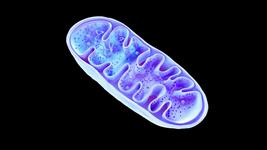CMN Weekly (27 October 2023) - Your Weekly CRISPR Medicine News
By: Gorm Palmgren - Oct. 27, 2023
Top picks
- Ayal Hendel and co-workers at Bar-Ilan University, Israel, introduced today a CRISPR-Cas9-based recombination-activating gene 2 (RAG2) correction method to treat RAG2-severe combined immunodeficiency (SCID) by replacing the gene's entire coding sequence, ensuring the preservation of its natural gene regulation. RAG2 is intimately involved in the process of lymphocyte maturation and function, and the new approach facilitated the successful development of specific T cells in vitro, offering a promising and safer alternative to current stem cell transplantation treatments.
- To combat escalating carbapenem-resistant Acinetobacter baumannii (CRAB), researchers in China have developed a CRISPR-Cas9-based nanobomb. The nanobomb delivers and releases antibiotics to infected tissues. It enhances their effect by reversing drug resistance through CRISPR-Cas9 gene editing, produces nitric oxide to heal infections, and disrupts bacterial biofilms, effectively combating resistant bacterial infections while promoting tissue healing.
Research
- American researchers introduce "compressed Perturb-seq," a cost-effective modification of the conventional Perturb-seq (pooled CRISPR screens with single-cell RNA sequencing readout) technique. When tested on 598 immune-related genes, the new method identified known and previously overlooked immune response regulators.
- Chinese researchers have shown that - different from its known cis/trans-RNA-cleavage activity - Cas13 can also cleave host RNA via transcript-specific mechanisms, independent of the sequence of CRISPR RNA and dynamically dependent on the conformational state of Cas13. The findings offer guidance for the appropriate use of lentiviral Cas13 systems and highlight the need for caution regarding intrinsic RNA targeting in Cas13-based applications.
- Indian researchers have used CRISPR-Cas9-mediated gene editing to generate LIG4 mutants in cervical cancer. The mutants showed compromised NHEJ, elevated DSBs and a significant increase in MMEJ and HR activity. Moreover, LIG4 mutations sensitized cells to cancer therapeutics.
- Using a comprehensive CRISPR genome-wide, British and American researchers may have discovered an "on/off" switch for Parkinson's disease. They found that when a gene named Rab12 is missing, LRRK2 - a protein linked to Parkinson's disease - doesn't work as it usually would. Even more interesting, they found a new spot where Rab12 connects to LRRK2, which may be the new switch.
- Researchers in Australia have used CRISPR-Cas9 to demonstrate that loss-of-function - but not gain-of-function - properties of mutant tumour suppressor TP53 are critical for the proliferation, survival and metastasis of a broad range of cancer cells. Mutations in TP53 were previously known to cause cancer and impart poor chemotherapeutic responses, reportedly through loss-of-function, dominant-negative effects and gain-of-function (GOF) activities. Still, the relative contributions of these attributes have so far been unknown.
Industry
- Verve Therapeutics announces clearance of investigational new drug application by the US FDA for VERVE-101 in patients with heterozygous familial hypercholesterolemia. VERVE-101 is an investigational, in vivo base editing medicine designed to be a single-course treatment that inactivates the PCSK9 gene in the liver to lower blood low-density lipoprotein cholesterol (LDL-C) durably.
Industry reports from the European Society of Gene & Cell Therapy (ESGCT) Congress in Brussels
- Excision BioTherapeutics announced positive safety data from the first dose cohort in its first-in-human phase 1/2 trial to assess the safety and pharmacodynamics of EBT-101. EBT-101 is a dual-guide, CRISPR-based investigational gene therapy for treating human immunodeficiency virus type 1 (HIV-1).
- Prime Medicine reported new preclinical data demonstrating the ability of liver-targeted Prime Editors to efficiently and precisely correct one of the most prevalent disease-causing mutations of glycogen storage disease 1b (GSD1b) in non-human primates (NHP) and mouse models. Up to 50% whole liver precise editing in NHPs at day 14 was achieved without significant on-target unintended edits.
- Precision BioSciences presented preclinical data highlighting the capabilities of its proprietary ARCUS platform for gene insertion and excision. ARCUS demonstrated 17 times higher gene insertion efficiency than CRISPR-Cas9, validating the importance of the cut made by ARCUS.
- Beam Therapeutics presented preclinical data highlighting the utility and durability of BEAM-301 to correct a glycogen storage disease type I (GSDIa) deficiency disease-causing mutation. A single dose of BEAM-301 yielded long-term survival of treated mice at least one year post-treatment, compared to untreated GSDIa mice with poor survival of only a few weeks.
Detection
- A new approach allows multiplexed CRISPR-based nucleic acid detection using only a single Cas12a protein. The method integrates the toehold-mediated strand displacement (TMSD) reaction and the cis-cleavage activity of the Cas12a protein, and multiplexed detection is achieved owing to the use of target-specific reporters.
- Researchers in China have introduced an electrochemical CRISPR-dCas9 sensor (E-dCas9) capable of sensitively and specifically detecting circulating tumour DNA (ctDNA) at single-nucleotide resolution. Superior sensitivity in detecting minute ctDNA variations was demonstrated, and the sensor accurately analyzed blood samples from lung cancer patients, highlighting its potential for ctDNA-based cancer diagnosis.
- Chinese researchers describe a universal CRISPR-Cas14a-responsive ultrasensitive upconversion photoelectrochemical (PEC) sensor for detecting small molecules within the fg range. The method is based on the non-nucleic acid targets being converted into DNA input sensors through the competitive binding of the target and complementary strand to the aptamer.
Reviews
- CRISPR screening in haematology research: from bulk to single-cell level. This review discusses the use of bulk CRISPR screening in haematology research and the emergence of single-cell CRISPR screening and its added value to the field.
- Current landscape of various techniques and methods of gene therapy through CRISPR Cas9 along with its pharmacological and interventional therapies in the treatment of type 2 diabetes mellitus. Recent advancements in gene-editing technologies, such as CRISPR Cas9, have opened new avenues for developing novel therapeutic approaches for T2DM. CRISPR Cas9 is a powerful tool that enables precise and targeted genome modifications.
- Hereditary transthyretin amyloid neuropathies: advances in pathophysiology, biomarkers, and treatment. This review covers advances in treating hereditary transthyretin (TTR) amyloid polyneuropathy, an autosomal dominant life-threatening disorder caused by mutations in the TTR gene. CRISPR-Cas9 gene editing is one of the new treatment approaches discussed in the review.
- Sensitive and portable signal readout strategies boost point-of-care CRISPR/Cas12a biosensors. This review focuses on signal readout strategies, novel portability-improving strategies based on lateral flow assays (LFAs), microfluidic chips, simplified instruments, and one-pot design. It also provides an outlook for the future development of CRISPR-Cas12a biosensors.
- CRISPR/Cas9 technology: applications in oocytes and early embryos: This comprehensive review elucidates the fundamental principles of CRISPR/Cas9-related methodologies and explores their wide-ranging applications in deciphering molecular intricacies during oocyte and early embryo development as well as in addressing associated diseases.
- CRISPR/Cas-based gene editing in therapeutic strategies for beta-thalassemia. This review summarises current CRISPR-based clinical trials in treating β-thalassemia, focusing on γ-globin reactivation and fetal haemoglobin reproduction in hematopoietic stem cells.
Webinars
- On Wednesday November 1, CRISPR Medicine News is holding a free webinar entitled "Transcriptional linkage analysis with in vivo AAV-Perturb-seq" by Randall Platt at ETH Zürich. He will discuss how AAV-Perturb-seq may be deployed as a flexible and scalable direct in vivo tool to understand genotype-phenotype correlations in the context of disease, with potential applications in identifying novel therapeutic targets.
News from CRISPR Medicine News
- On Monday, we covered a recent study where researchers in Denmark engineered lentiviruses to incorporate Cas9 protein fused to viral proteins to allow the packaging of Cas9 into viral particles. We interviewed Jakob Haldrup at Aarhus University about the new approach that provides delivery of CRISPR ribonucleoprotein complexes, enabling transient editing activity with lower off-target effects than standard RNP nucleofection.
To get more of the CRISPR Medicine News delivered to your inbox, sign up to the free weekly CMN Newsletter here.
Tags
CLINICAL TRIALS
IND Enabling
Phase I
Phase II
Phase III
Recurrent or Progressive High-grade Glioma, (NCT06737146)
Sponsors:
Suzhou Maximum Bio-tech Co., Ltd.
Sponsors:
Suzhou Maximum Bio-tech Co., Ltd.
IND Enabling
Phase I
Phase II
Phase III
Advanced Peritoneal Malignancies or Abdominal Metastatic Solid Tumors, (NCT06912152)
Sponsors:
Zhejiang University
Sponsors:
Zhejiang University
IND Enabling
Phase I
Phase II
Phase III







